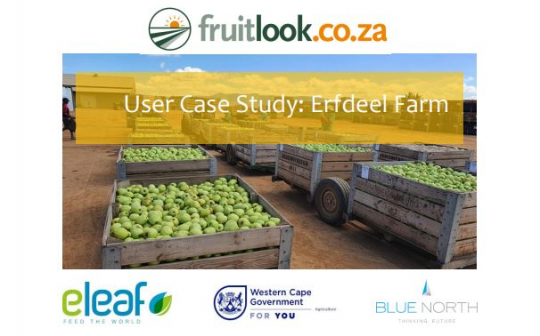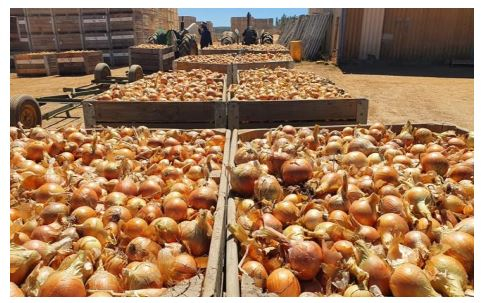
About Erfdeel Boerdery
Erfdeel farm lies within the Matroosberg area of Ceres and was purchased by Cordre Smith’s father in 1978. They produce approximately 100 ha of apples and onions under irrigation and also have an additional 30 ha of pumpkins, lucerne, and seed onions in the Karoo. “Erfdeel started from nothing and was built up to what we have today through hard work by the family over the past 43 years.”
How did you first get started with FruitLook?
Cordre first learned about Fruitlook from a post he saw about it on Facebook. “It is important not to be solely dependent on technology, but to make use of the technology that is available to you.” User Case Study: Erfdeel Farm
How do you use FruitLook and/or integrate it into your everyday actions and decision-making process?
Cordre checks the FruitLook data every week or every second week to see if his blocks are dry or over-irrigated. He then compares this with what he sees in-field. ”I like that Fruitlook data can show me dry or over-irrigated blocks before it is noticeable in-field.” Cordre says that Fruitlook helps him to identify weak spots in his blocks. “If you walk into your orchard, you will only notice the weak spots once they deviate more than 20% from the norm. By then it’s too late.” In most cases, the deviation from the norm is not easily noticeable infield. “As you walk in an orchard, the trees might get smaller without you seeing a difference. With FruitLook’s spatial view you can pick up the deviation immediately and act accordingly.”
Any stories of how FruitLook has helped you in a specific situation?
Cordre used FruitLook’s nitrogen data to do a comparison between the trends of a block treated with a soil health fertilizer and those treated with chemical fertilizer. The nitrogen content of the block treated with the soil health fertilizer did not decrease during a stressful time, while the nitrogen content of the other blocks treated with the chemical fertilizer decreased. “We will be treating half of the farm with the soil health fertilizer in the coming season.”
What would you say is the biggest benefit of FruitLook?
“To be able to identify problems is the biggest benefit of Fruitlook for me at this stage.”
What would you recommend as the biggest improvement for FruitLook?
Cordre feels that daily updated FruitLook data would help to further improve irrigation efficiency on his farm. “Irrigation is the most important thing for us on the farm. Onions are less sensitive to irrigation, but the fruit is very sensitive, whether it’s being over or under-irrigated. The greatest need for us is to irrigate more efficiently, and the more FruitLook can help me to irrigate more efficiently, the better. Fruitlook has new data once a week, but farming happens every day. However, the weekly data is still valuable to pick up trends.”
What would be the best channels to communicate to users?
“Social media is a good way to promote FruitLook,” Cordre says that even though the Agriculture Associations are also a good place to promote Fruitlook, they have fewer meetings now than in the past.
How can FruitLook be used in the context of regenerative farming or climate-smart farming?
Cordre says that regenerative farming requires more measurements at different times of the year. Nitrogen trends can be more regularly monitored with FruitLook. “We take soil samples once every three years and leaf samples after harvesting. It only gives you information on what is currently going on and not continuously. I would like to see continuous trends. With Fruitlook’s nitrogen reading, you will be able to see the trends more regularly.”
What is your farming philosophy?
“We don’t want to farm against nature but rather with nature.” Cordre’s goal is to improve soil health by using fewer chemicals and more biological products. “We recently had poor results with some biological products, but it’s a learning process.”



